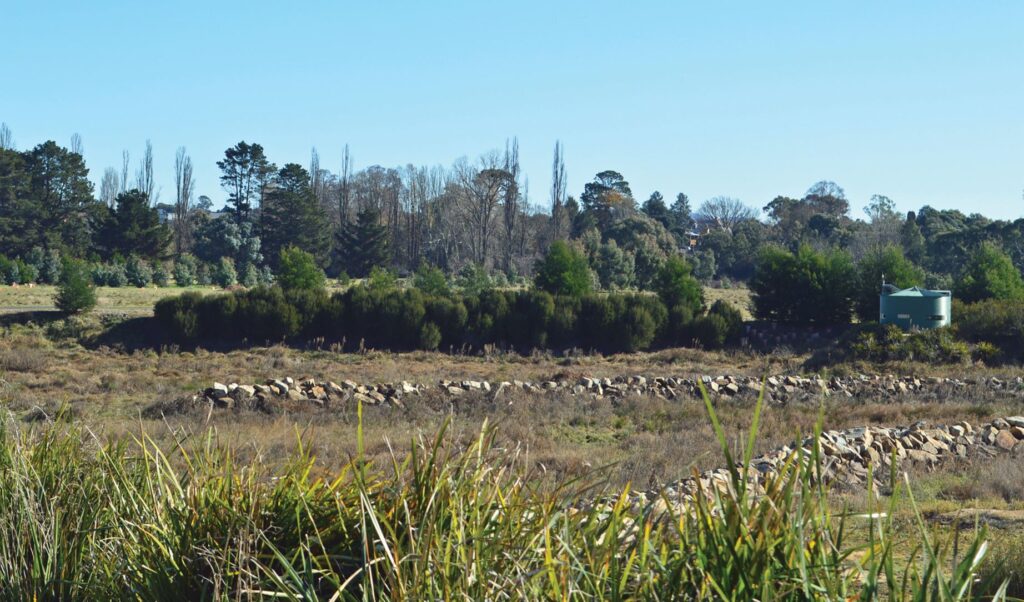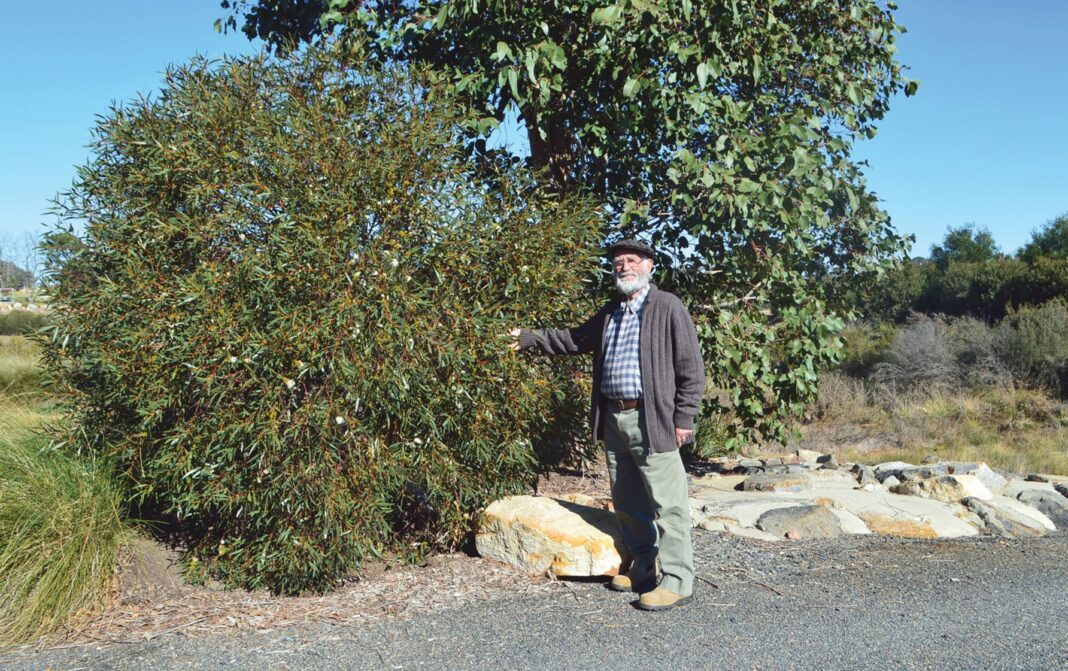Goulburn Wetlands, established in 2010 and nurtured by Friends & Residents of Goulburn Swamplands (FROGS) Landcare Inc., is a beautiful city escape, giving visitors the opportunity to relax with nature.
The area was previously run as an industrial brickworks and had been abandoned for some time. Today, areas of the wetlands, including remnants of the brickworks, have been preserved for their heritage and community value. This includes a beautiful ‘rock’ comprising of clinker bricks.
The wetlands, located in the flood plains of Eastgrove in Goulburn NSW, play an integral role in catching and filtering stormwater run-off. Designing is underway into utilising recycled water throughout the wetland ponds to better control water levels and maintain their health. Berms containing over 2,000 tonnes of rock have been installed to slow the flow of water, maximise absorption and help filter out contaminates. There are also three leaky weirs with the same purpose.

President of FROGS, Ray Shiel, said the award-winning wetlands is an example of what a community organisation can achieve alongside other valuable stakeholders, and that having a long-term vision is paramount to success.
Ray went on to explain that his involvement with FROGS has been an opportunity for him to contribute to the local community, especially preserving its invaluable and beautiful landscape. Ray said up to 24 volunteers maintain and continually develop the 13.5 hectare council-owned site for four hours each week, which includes a delicious and well-earned morning tea!
The wetlands provide a rich food and habitat source for an array of wildlife, including no less than 130 bird species throughout the year. Visitors can observe the birdlife from three strategically placed bird hides.
There are demonstration garden beds located at both main entries, established by the Australian Plant Society Southern Tablelands Group (who also propagated many of the plants on site) and designed to show people what can be achieved using native plants in their own backyards.

Many of the locally occurring shrubs and trees growing at the wetlands originated from seed collected within a 40km radius of the site. Some of the Eucalypt species thriving there include:Eucalyptus amplifolia(Cabbage Gum), E. bridgesiana(Apple Box), E. elata(River Peppermint), E. gregsoniana(Wolgan Snow Gum), E. melliodora(Yellow Box), and E. pulverulenta(Silver-Leaved Mountain Gum).
Grasses include both local species and those from further afield. Most are planted with 450mm spacing to ensure optimum coverage, protection of the soil and exclusion of weeds.
Several open areas with heritage value have been planted with the hardy Sierra Leone couch grass, which protects the soil and prevents weed invasion due to its vigorous nature and allelopathic qualities (biological occurrence where one plant species inhibits the growth of others).
FROGS are aiming to continually increase the diversity of plant types and species at the wetlands to maintain a more balanced and healthier ecosystem. They also collect and store the locally acclimatised seed for future planting and species protection.
Goulburn Wetlands are open all hours for pedestrians and offer self-guided tours and education opportunities, and a wheelchair-friendly viewing platform overlooking the main pond area.
For more: goulburnwetlands.org.au
More stories:



